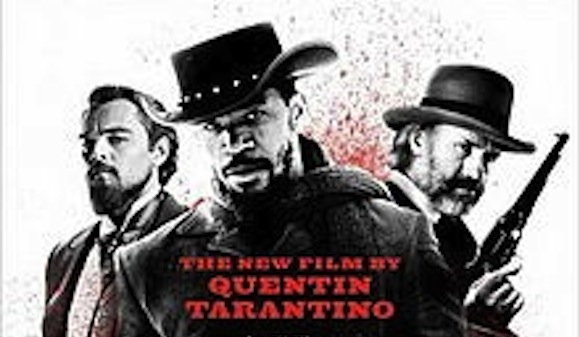The controversy over Quentin Tarantino’s latest movie cuts to the heart of a long-simmering debate about the sometimes fine line that separates racial references in art from those that are, in fact, racist.
First let me dispose of the notion that widespread distaste for “Django Unchained” among African Americans, is rooted primarily in its liberal use of the n-word. If that were the extent of the problem, Tarantino’s riposte in an interview with Henry Louis Gates, as cited recently in The Los Angeles Times, would be correct and sufficient: that the word is just part of the “ugly” reality of the film’s slave-era setting.
The scenario includes a depiction of New Orleans, by the way, an apt reference point given that the city has come to symbolize the horrors as well as the unplanned promise of the African experience in the United States.
Tarantino’s been called to account before for his obvious love of the n-word, notably by Spike Lee. Harking back to Tarantino’s 1997 send-up of blaxploitation films, “Jackie Brown,” Lee is quoted in the L.A. Times article to the effect that he won’t be seeing Tarantino’s latest because doing so would be an act of disrespect for his ancestors.
Black possessiveness of black racial capital—the claim that white artists shouldn’t attempt to represent certain aspects of black history or identity—is not a legitimate reason for boycotting “Django Unchained.” As Toni Morrison wrote in her 1992 essay, “Playing in the Dark,” white artists should NOT shy away from depicting black characters or from exploring the common American inheritance of racism and its ramifications. It just needs to be understood that a white artist’s engagement with black culture usually sheds as much light on white racial psychology as on black culture and history. There’s nothing wrong, ignoble, or racist about a white artist’s willingness to explore his own racial psychology. In fact, it can be seen as courageous—unless premised on falsehoods or fraught with intellectual dishonesty.
Tarantino contends that his film is courageous in at least one respect: While most post-civil rights era films dealing with slavery seem to walk on eggshells, aesthetically neutered by “fear of” (mislabeled “respect for”) the material, he’s willing to let loose in his inimitable style even if it risks offending timid sensibilities.
And let loose he does. The lingering question, however, is whether “Django Unchained” explores racist psychology in illuminating ways or simply exploits anti-racist emotional responses like a Pavlovian bell. That’s exactly what last year’s much-hyped “The Help” did, albeit in stylistically different ways. Like Tarantino films involving black characters, “The Help” was a movie by and for white people. The difference is this: “The Help” was a white liberal woman’s fantasy, and “Django Unchained” is a male white hipster’s fantasy. Neither film is racist, in that both excoriate institutional racism and advocate black equality—not that such stands are any longer brave or even controversial. But both films reduce racial injustice to a mere prop embellishing the drama of white characters’ lives, and both shrink black agency to a level that falls well short of historical reality.
However embarrassing or uncomfortable white movies about black people may be to black viewers, in the post-civil rights era they are signs of racial progress. Ever since 1903 when W.E.B. DuBois defined “double consciousness”—the psychologically draining requirement that African Americans see themselves through white America’s eyes as well as their own—much has been written about the pitfalls of the black search for white approval. Yet, a couple of years before DuBois’ famous essay, in Paul Laurence Dunbar’s novel The Sport of the Gods we begin to see a countervailing tendency, first involving tiny numbers, but growing steadily from the 1920s through the post-civil rights era: the white longing for black approval. This is the key to a sympathetic understanding of artists as diverse as Tarantino and Kathryn Stockett, author of the book of the same name from which “The Help” was adapted for the screen.
Something about Tarantino’s approach, however, has ruffled feathers more than Stockett’s book or the film made from it. The reason, I think, is this: Tarantino, more than other white hipsters, excels at turning vernacular cultural genres (blaxploitation movies, spaghetti westerns, comics, pulp fiction) into elite displays of craftsmanship, in the process trivializing their meaning or emptying them of meaning altogether.
His use of black idiom, as in “Django Unchained,” can come dangerously close to being a linguistic version of blackface, however benign his political intent? There is a lingering suspicion that hip white artists mine stereotypical modes of black expression for their currently trendy style and sound. In the process, the analytical purpose and punch of black speech is lost, ignored, or deliberately diverted.
In that sense, Tarantino offers a contemporary analogue to Carl Van Vechten’s controversial 1926 novel, “Nigger Heaven.” Like Tarantino, Van Vechten, who was also white, was not racist. Indeed, he was friend and patron to dozens of black artists whose names are now synonymous with the Harlem Renaissance. But to many readers, both black and white, he crossed a line when he wrote his own version of a “black” novel, one loaded with “colorful” Harlem characters—the usual suspects: hookers, gamblers, addicts, etc.—and had them speak in the slangy idioms that were guaranteed to offend polite black society. Viewed sympathetically, Van Vechten’s effort betrays a will, however fleeting or misguided, to become black himself.
Tarantino’s most revealing comment about “Django Unchained” suggests a similar tendency. In the L.A. Times interview he predicts that children of the African Americans who are assailing his movie will eventually come to see “Django Unchained” as a kind of “rite of passage for young, black males.” This would seem to be a clear case of projection, of Tarantino displacing his own feelings onto the object of his adoration. In other words, for young, hip, white males, mastery of black vernacular idiom is a “rite of passage,” even if its meaning is frequently misunderstood.
It’s a matter of style vs. substance, an ancient dichotomy but a useful one. History is substantial, a body of facts understood to have shaped the concrete realities we face today. As Marxist literary critic Fredric Jameson has averred, “History is what hurts.” That makes people still suffering the burden of history that much more averse to seeing it consigned by a film stylist to the realm of shiny objects suitable for contemplative manipulation.
Do we need reminding? Slavery is widely considered THE most hurtful chapter in the whole saga of American history. Did it take guts for Tarantino to make a funhouse of a movie with such material? Or has he merely revealed himself as an immature, self-absorbed narcissist? “Django Unchained” may not tell us all that much about slavery. It provides trenchant insights, however, into the racial psychology of a very talented director and, by extension, into the way many white people view race and racial history today. Spoiler alert: The slave owners are the bad guys, and that’s good news—even if it’s not really news.
C.W. Cannon teaches in the English Department at Loyola University.

